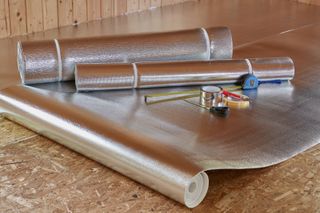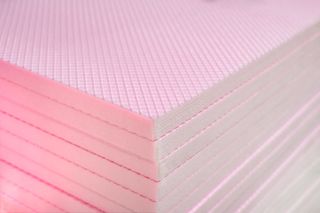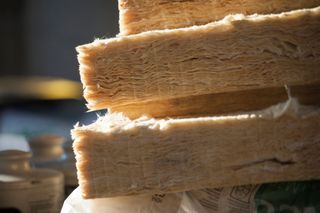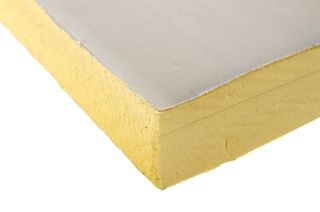Insulation for underfloor heating: How to pick the best material for your project
There are plenty of options and considerations for insulation for underfloor heating — our energy efficiency expert Tim Pullen explains everything you need to know

Insulation for underfloor heating is important to consider when planning a heating system for your home.
Not only does insulation reduce heat loss but it also can save you money too, especially when the insulation itself can be reasonably inexpensive in comparison.
But there are many options out there, making it tricky to choose which underfloor heating insulation type is best for your project.
Here is everything you need to know about underfloor heating insulation, from why you might need it to the different types available depending on where in the home your underfloor heating is installed.
Do I need insulation for underfloor heating?
There are two reasons for insulating underfloor heating (UFH), the first is one of timing. A properly insulated UFH system could take two hours to bring the room above it up to temperature. Without insulation, the system is trying to heat the concrete slab and the ground below it so this is likely to extend the heat-up time to 6-7 hours. This can get to the point where the only practical way to operate the system is to have it on 24/7.
This might not sound like an unreasonable way to operate the system, until we consider the second reason: heat loss. Around 10% of the heat in an uninsulated house will escape through the floor. If the rest of the house is insulated to a reasonable level that proportion of heat loss will only increase. The question then is do you want to add 20% or 25% to your heating bill?

Do I need insulation for wet and electric systems?
Yes, the importance and thickness of insulation does not vary with wet UFH or electric underfloor heating, new build or retrofit. They are all trying to achieve the same thing – heating the room above it – so ideally they all need the same support.
However, in some circumstances, e.g. retrofit underfloor heating, that is not always practically possible and other solutions are needed.
Which insulation is best for underfloor heating?
Insulation has two functions: slowing heat loss and ensuring good heat transference to the screed and ultimately to the room.
For this reason, the type of insulation that is needed for underfloor heating depends on where you plan to install it – ground floor or first floor – and how much height in a room you have to play with.
In addition to this, insulation may need to provide a firm surface to carry the floor screed that is needed for electric underfloor heating installation as well as for wet UFH. To that end a rigid insulation materials – PIR, polystyrene or wood fibre – can give the best results, as discussed further below.
Is mineral wool good for insulation?
Mineral or sheep wool can be used for underfloor heating insulation but a spreader plate will be needed to provide a flat firm surface. And the wool will need to be twice as thick as other types of insulation.

Is backing board good for UFH insulation?
A backing board is most often used for underfloor heating insulation with electric UFH and retrofit wet systems. This can be:
- Expanded polystyrene (EPS)
- Extruded polystrene (XPS)
- Gypsum boards
- Polyisocyanurate (PIR) board
- Polyurethane (PUR) board
- Wood fibre boards
- Cement boards
- Preformed boards with channels to hold wet UFH pipes
Backing boards are typically between 12mm to 25mm thick.
They provide a good, flat sub-base for a tile floor finish but the insulation value is as would be expected from a material that is 12mm to 25mm thick.
There is no magic with insulation. Its efficacy is always a factor of its thickness so whether a backing board is sufficient or not very much depends on how thick it is.
For this reason, it's best to work out what U-value your chosen product will give and how that compares to the Building Regulations. There are online U-value calculators to help you with this or you can ask your insulation board manufacturer if the information isn't immediately available for your chosen product. U values are measured by the unit W/m2K.

How do spreader plates work with UFH?
Backing boards are not to be confused with spreader boards. Spreader boards are a fixing system to hold the pipes in place while screed is installed and the floor finished.
In some cases, the aluminium spreader plates also ‘spread’ the heat evenly across the floor and hold insulating materials like mineral wool in place. But generally, they serve no insulating use themselves.
What insulation do I need for ground floor UFH?
The Building Regulations are a good starting point for this and the latest edition (2022) requires a maximum U-value for the floor of 0.13W/m2K.
Achieving this requires a minimum of 180mm of PIR insulation or 300mm of mineral wool. In a new build home that U-value has to be achieved anyway and that level of insulation is more than adequate for the UFH.
In a renovation there is more latitude, and thinner insulation is often all that can be done. If the UFH and insulation can be installed below the existing floor level (i.e. between the floor joist) then it is likely that there is room for 75mm to 100m of insulation, which would be fine.
If the UFH is to be installed on top of the existing floor, then the thinnest possible insulation is likely to be needed. Often this will be EPS or gypsum backing board and a ceramic paint, like Therma-Coat, will help reflect heat back into the room.
What insulation do I need for intermediate floors?
Building Regulations do not stipulate thermal insulation for intermediate floors, although sound insulation is recommended which can be met with 50mm of mineral wool.
In terms of heat loss in a house, 50mm of PIR or 75mm of mineral wool will prevent excessive downward heat loss from overheating the room below.
Should I insulate underfloor heating pipework?
In short, yes. Don’t forget to insulate the primary pipework running to the underfloor heating manifold for wet systems and pipes running from the pipes from the manifold to the floor.
You obviously won't need to insulate anything like your underfloor heating thermostat as this is part of the electrical system rather than the heating system.
Get the Homebuilding & Renovating Newsletter
Bring your dream home to life with expert advice, how to guides and design inspiration. Sign up for our newsletter and get two free tickets to a Homebuilding & Renovating Show near you.
Tim is an expert in sustainable building methods and energy efficiency in residential homes and writes on the subject for magazines and national newspapers. He is the author of The Sustainable Building Bible, Simply Sustainable Homes and Anaerobic Digestion - Making Biogas - Making Energy: The Earthscan Expert Guide.
His interest in renewable energy and sustainability was first inspired by visits to the Royal Festival Hall heat pump and the Edmonton heat-from-waste projects. In 1979
this initial burst of enthusiasm lead to him trying (and failing) to build a biogas digester to convert pig manure into fuel, at a Kent oast-house, his first conversion project.
Moving in 2002 to a small-holding in South Wales, providing as it did access to a wider range of natural resources, fanned his enthusiasm for sustainability. He went on to install renewable technology at the property, including biomass boiler and wind turbine.
He formally ran energy efficiency consultancy WeatherWorks and was a speaker and expert at the Homebuilding & Renovating Shows across the country.
